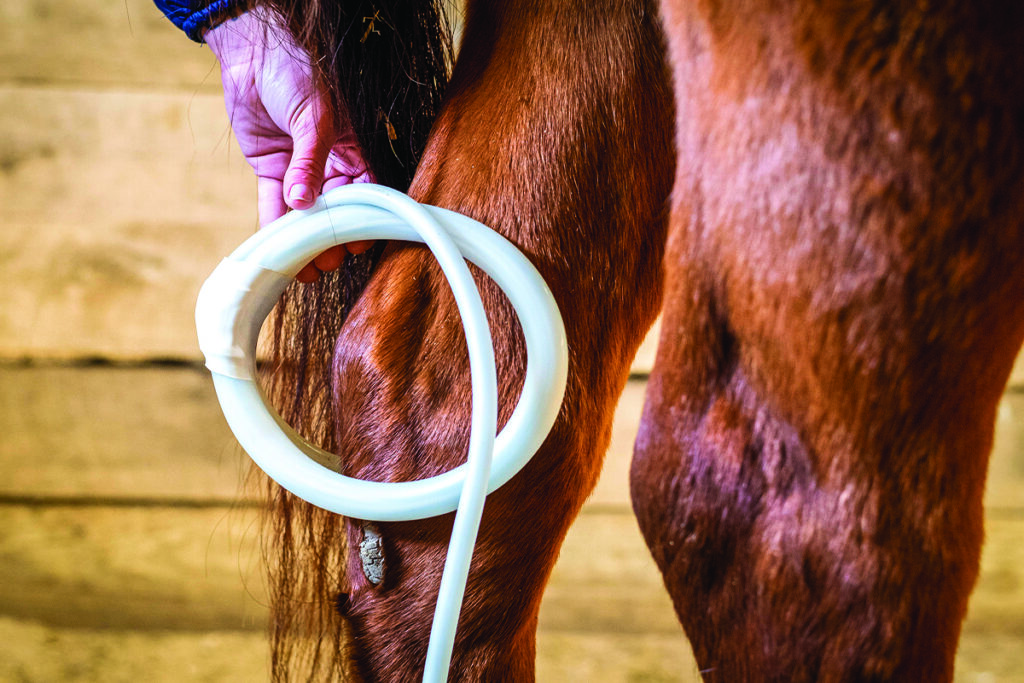
My Spanish Mustang gelding, Rio, is pretty stoic; it takes a lot for him to complain. When I realized the saddle he’d been wearing for years no longer fit him properly, it was because he finally let me know. After going down the trail for an hour or so, he’d start twisting his head to the left, almost as if he was looking up at a passing airplane.
PEMF—pulsed electromagnetic field—is a non-invasive therapy that is catching on in both the human and animal worlds. In horses, PEMF is being used to treat hoof and joint issues, tendon and ligament injuries, sore backs, inflammation, gastric ulcers, laminitis, stone bruises and other issues.
How PEMF Equine Therapy Works
PEMF has been researched since the 1940s, and thousands of studies, clinical trials and research articles have been published on the subject. Some of the studies have shown that PEMF promotes cellular exercise (a strike of energy into the cell causing expansion and contraction of the cell), increases oxygenation, and reduces inflammation.
According to the Space Foundation, a non-profit organization providing education, information and collaboration for space exploration, the earth projects a natural pulsed electromagnetic field that stimulates cell repair and overall health in all life forms. Studies have shown that the pulsed electromagnetic field given off by the earth is equally as important to human health as food, water, sleep and sunlight.
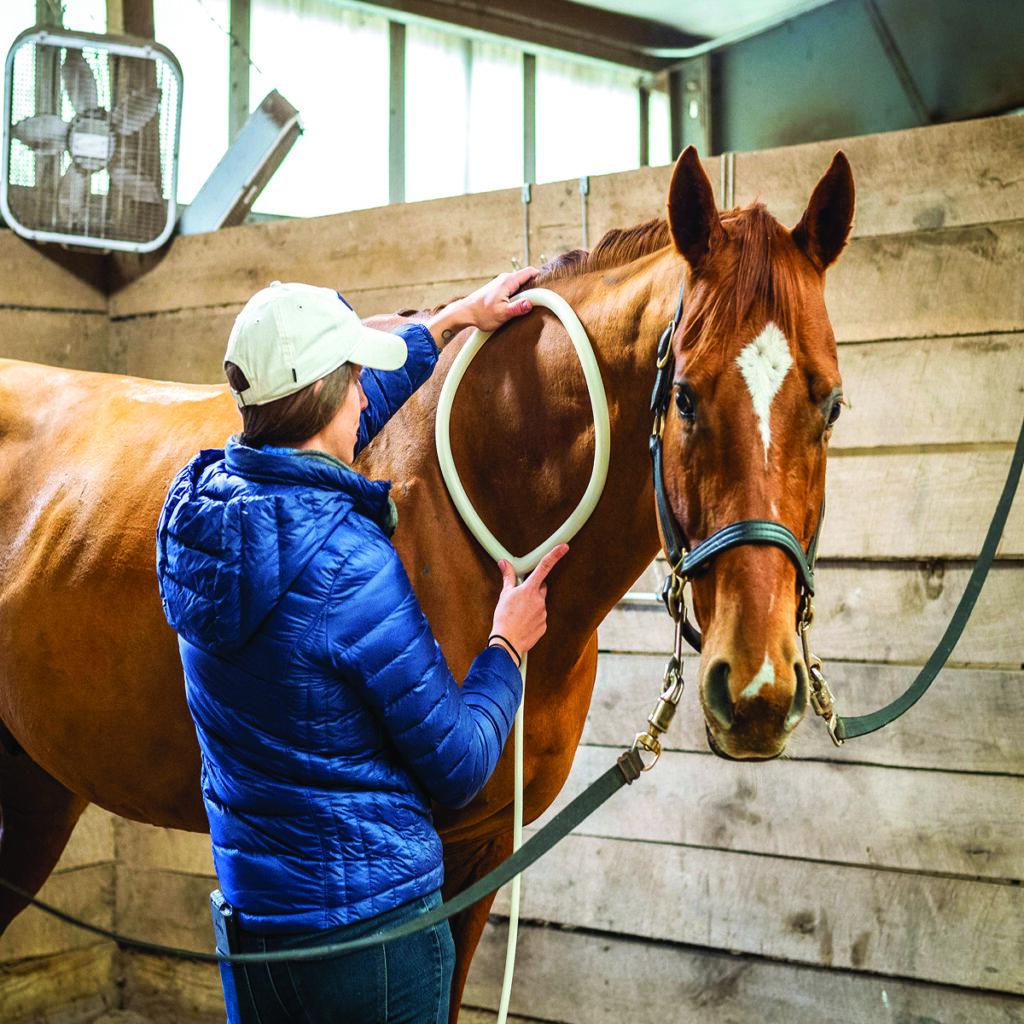
PEMF devices were originally used by the National Aeronautics and Space Administration (NASA) to maintain the health of astronauts in orbit. Being outside the earth’s magnetic field caused astronauts to develop space adaptation syndrome, a kind of motion sickness, but by adding a PEMF device to their space suits, scientists were able to recreate the earth’s magnetic field and alleviate this side effect of leaving the planet.
According to research published by the Association of PEMF Professionals (AOPP), evidence has been found to support PEMF equine therapy treatment for fractures, pain, wounds and other issues in horses. When used as part of multimodal treatment, the research showed that PEMF may improve veterinary clinical outcomes.
“PEMF is magnetic energy,” says Alane Paulley, president of MagnaWave, a manufacturer of PEMF machines in Louisville, Ky. “This energy is how cells talk to each other. I am constantly amazed at the results I see.”
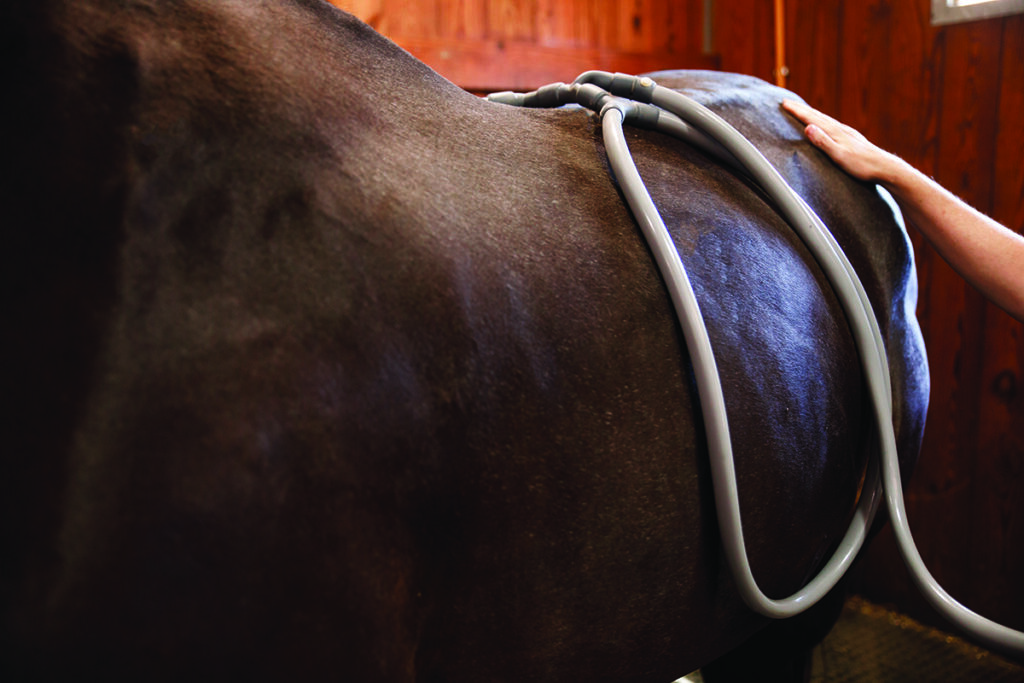
Straight From the Horse’s Mouth
While studies show that PEMF is effective in treating all kinds of health problems in living creatures, the most convincing evidence comes from horse owners who have seen amazing changes in their equine companions after treatment.
Hilary Ayres, who owns Full Stride Equine Massage and PEMF, is a certified PEMF practitioner located in Norco, Calif., who came to PEMF through the changes she saw in her own horse, Angel.
“I adopted Angel from a rescue when she was 2 years old, and later discovered she had Lyme disease,” she says. “Antibiotic therapy was only partially successful and made her extremely sick. Her main symptom was chronically tight muscles.”
Ayres began researching ways humans with Lyme disease relieved their aches and pains, and discovered PEMF equine therapy.
“I located a nearby practitioner and paid for six sessions,” she says. “By the fourth session, I had a new horse! She was energetic, playful, and her muscles were soft and loose. I was so impressed that I bought my first machine before the six sessions were completed. I was already doing equine bodywork—massage—and it was easy to integrate PEMF into my practice. Now I mostly do PEMF.”
The majority of Ayres’ clients seek out PEMF to keep their equine partners feeling their best, or as an adjunct therapy for general issues like muscle soreness and arthritis.
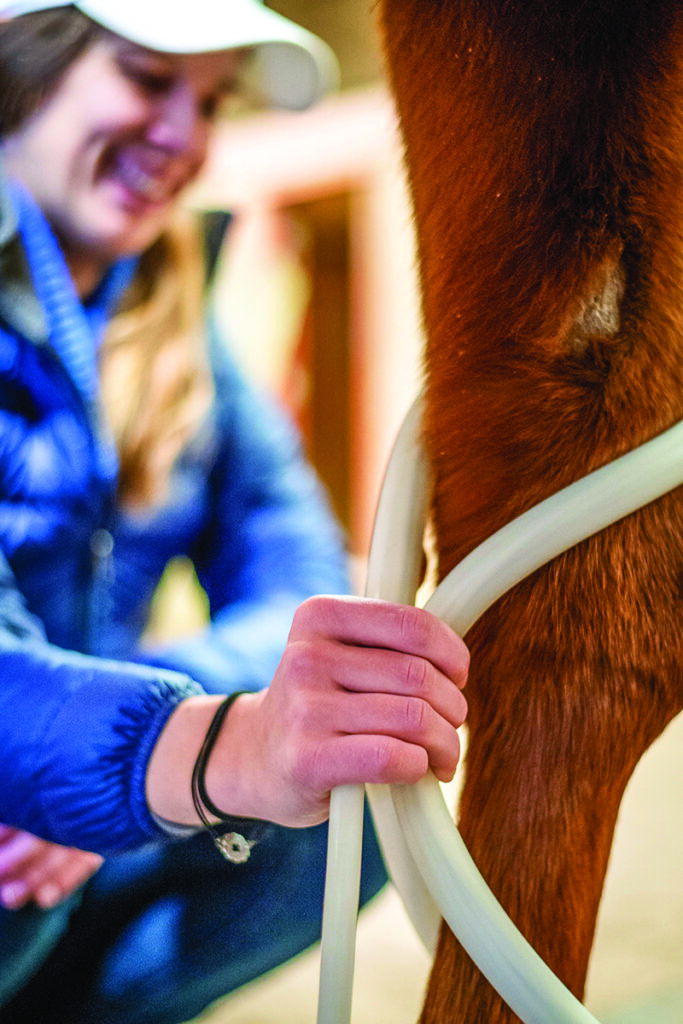
“I have seen some amazing results in horses with navicular, sacroiliac joint pain and kissing spine, all that were diagnosed by a veterinarian and treated under veterinary supervision,” she says.
PEMF practitioner Daisy Bicking of Parkesburg, Pa., has seen a number of horses respond well to the therapy, particularly when recovering from hoof issues.
“One horse had laminitis from metabolic disease and couldn’t grow hoof below the coronary band,” she says. “After using PEMF, the horse started growing new hoof, and quickly.”
Bicking also treated a horse that was transitioning out of shoes and was having trouble growing medial wall.
“When we added PEMF consistently, she grew a tremendously healthier foot in just one four-week trim cycle, finally gaining solid medial wall,” she says.
Another horse Bicking treated had low heel/long toe problems and couldn’t pick up her back feet without falling over.
“We added daily PEMF, and within two weeks, she could pick up her hind feet fairly comfortably,” she says. “She blew huge heel abscesses from trashing her hind feet for so long, but once they cleared up, she was totally normal behind. PEMF helped break the cycle.”
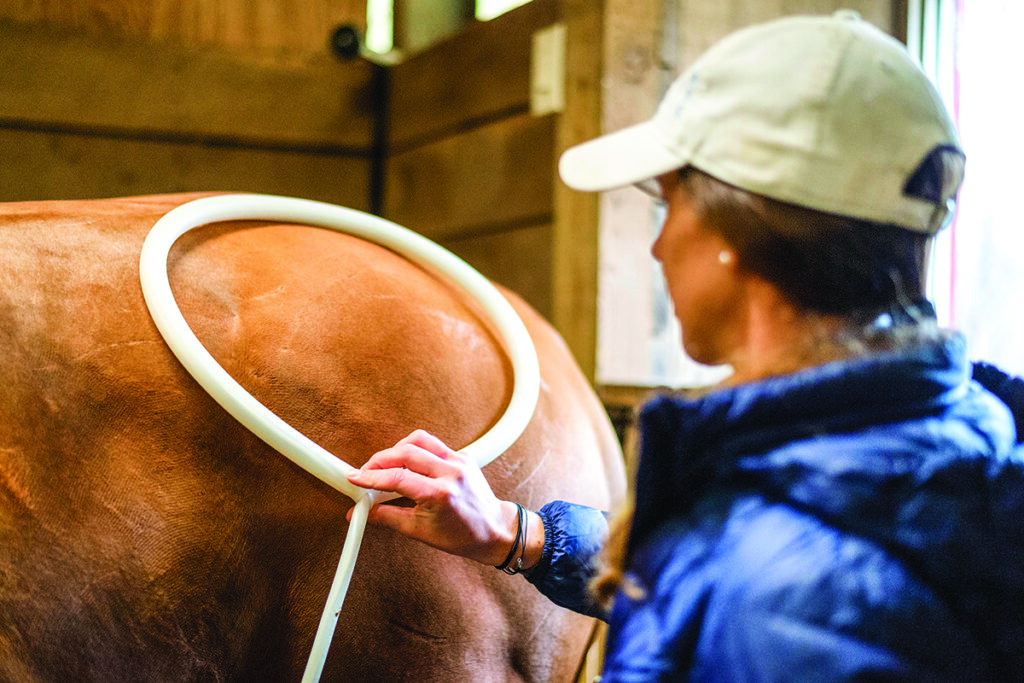
Lani Cruz of Riverside, Calif., decided to try PEMF on her mare Daisy because of issues with a sore back.
“A vet diagnosed Daisy with kissing spine in her lower back,” she says. “The vet agreed PEMF would be good for her.”
Cruz now has a PEMF practitioner treat Daisy once a week to keep her back muscles soft and loose, and to promote healing.
“Without the sessions, Daisy would tighten up, which would inflame her back again,” she says. “After her weekly sessions, Daisy feels good and is relaxed. Since she started treatment, she has really seemed to be a lot more fluid, less stiff, and her pain level has decreased tremendously! Her back isn’t as sore or sensitive as it had been.”
Cruz says Daisy really seems to enjoy her sessions.
“I have seen with my own eyes the benefits of PEMF on my horse,” she says.
Choosing a Practitioner
Finding the right person to perform PEMF on your horse isn’t difficult, thanks to AOPP. The organization offers three different certification courses to help PEMF practitioners get the education they need to provide this therapy to horses, humans and other animals.
Some manufacturers of PEMF machinery also offer certification programs for using their equipment, both in person and online.
When choosing a PEMF practitioner, it’s a good idea to ask about certifications and get recommendations from other horse owners or your veterinarian before making an appointment.
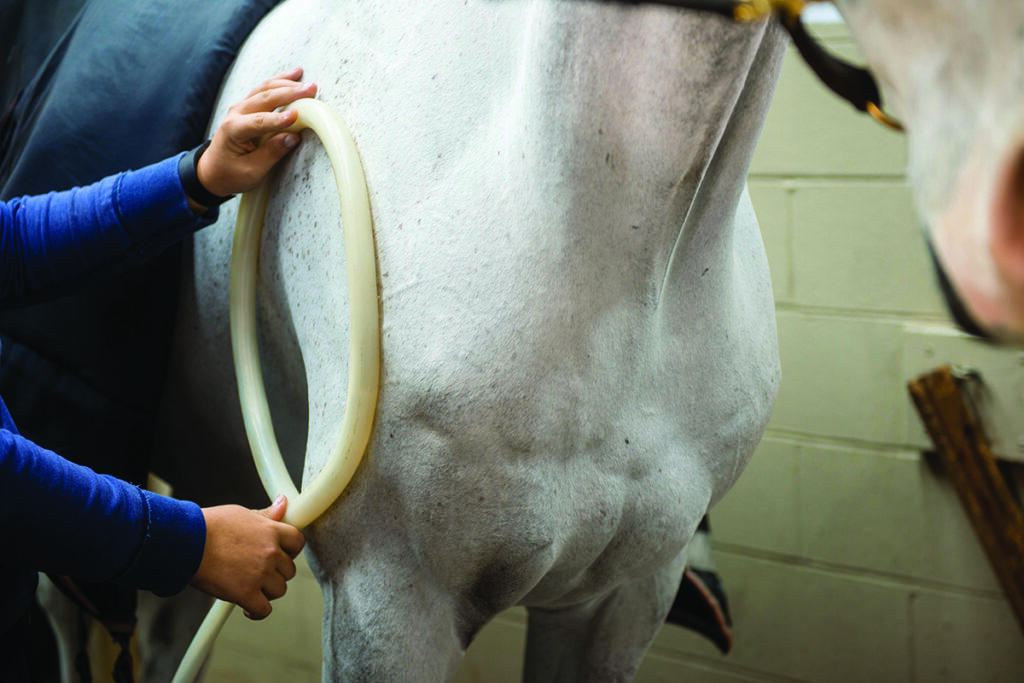
“A practitioner should be able to read the PEMF machine and understand how to treat your horse,” says Paulley. “They won’t get the best results if they don’t know how to do it right.”
She adds that a PEMF practitioner shouldn’t make a diagnosis but can provide information on what they see to the vet. Many PEMF practitioners work side by side with veterinarians when treating an issue.
After a few treatments of PEMF, my horse Rio seemed more comfortable under his new saddle and no longer twisted his head after an hour on the trail. He also seemed to really enjoy the treatments. This impatient equine who never stands still was perfectly motionless, and nearly fell asleep with the loops from the PEMF machine stretched across his back.
PEMF treatments are not overly expensive—I paid $75 per session for Rio’s—so they may be worth a try for horses that need some help healing from illness or injury.
“There’s no placebo effect in horses,” says Paulley. “If a horse gets better after PEMF treatments, it’s because this therapy actually works.”
PEMF Resources |
This article about PEMF equine therapy originally appeared in the September 2021 issue of Horse Illustrated magazine. Click here to subscribe!





